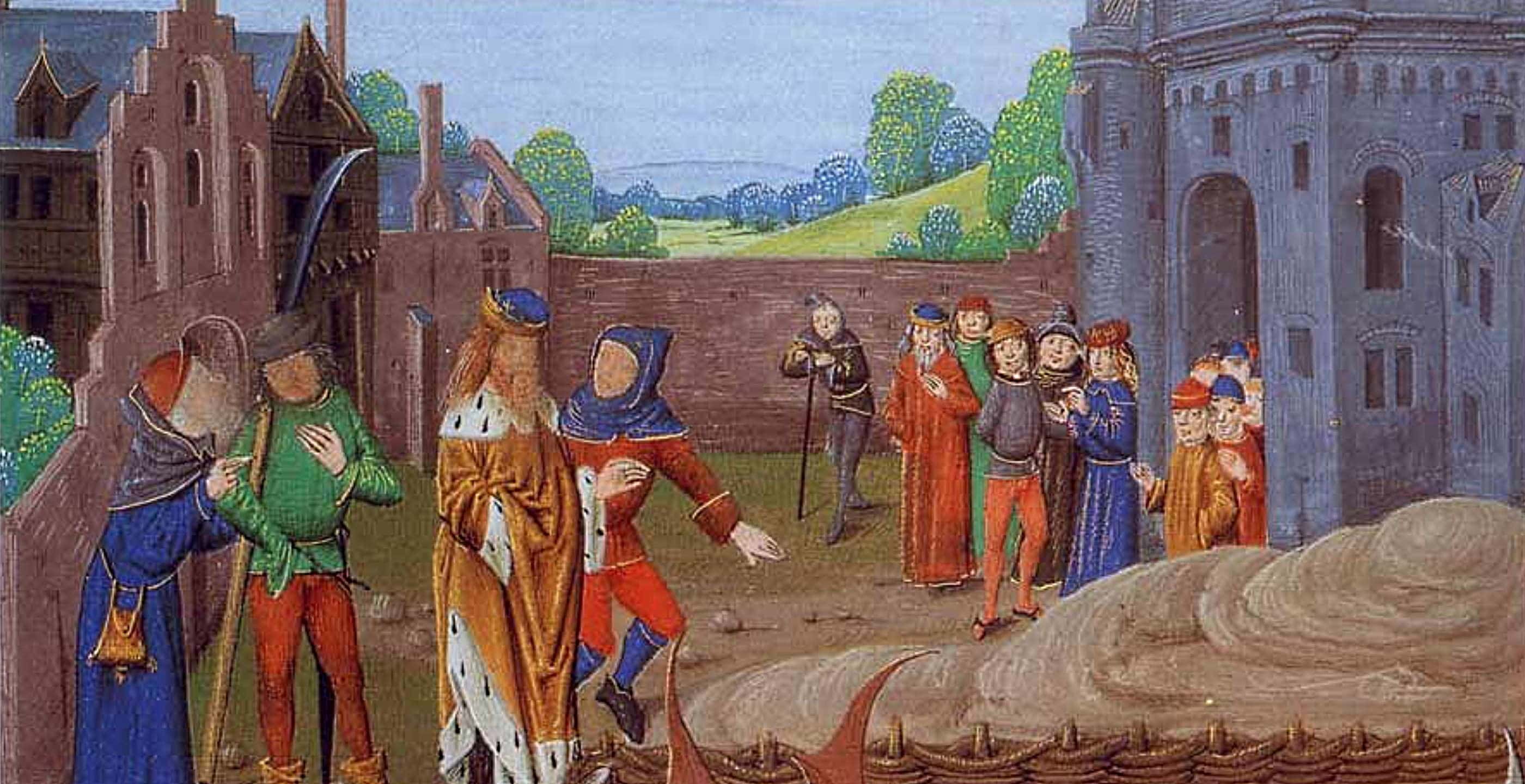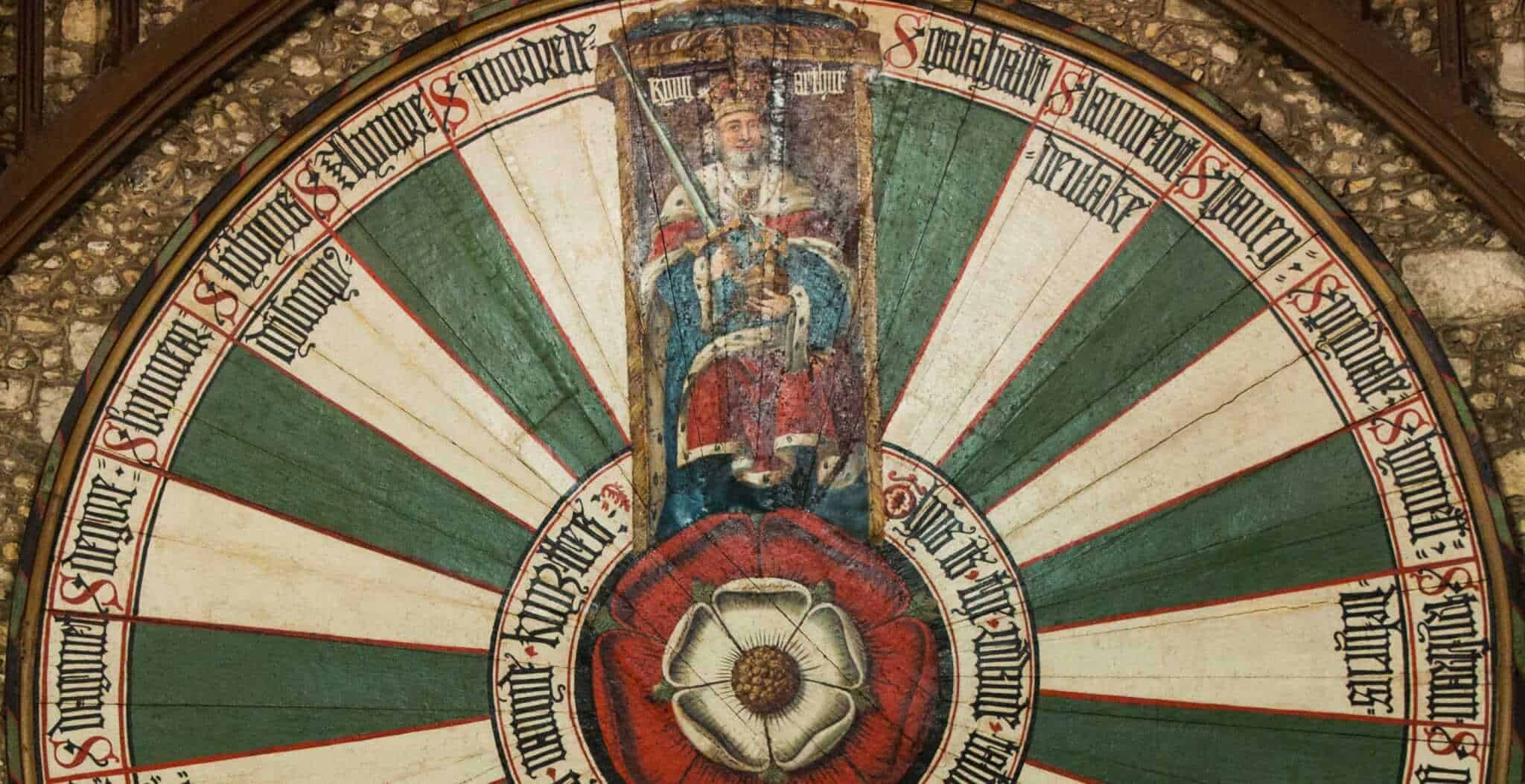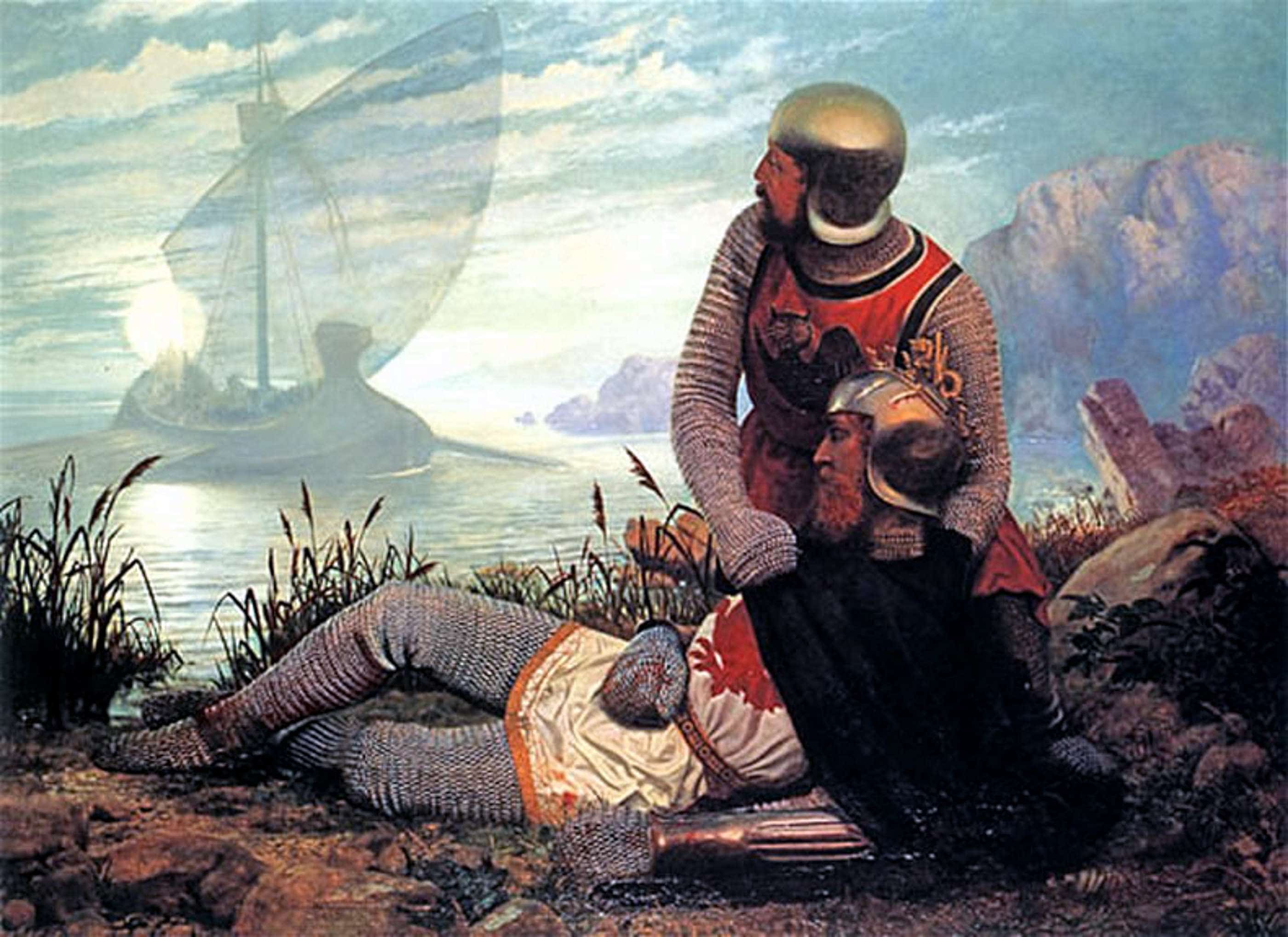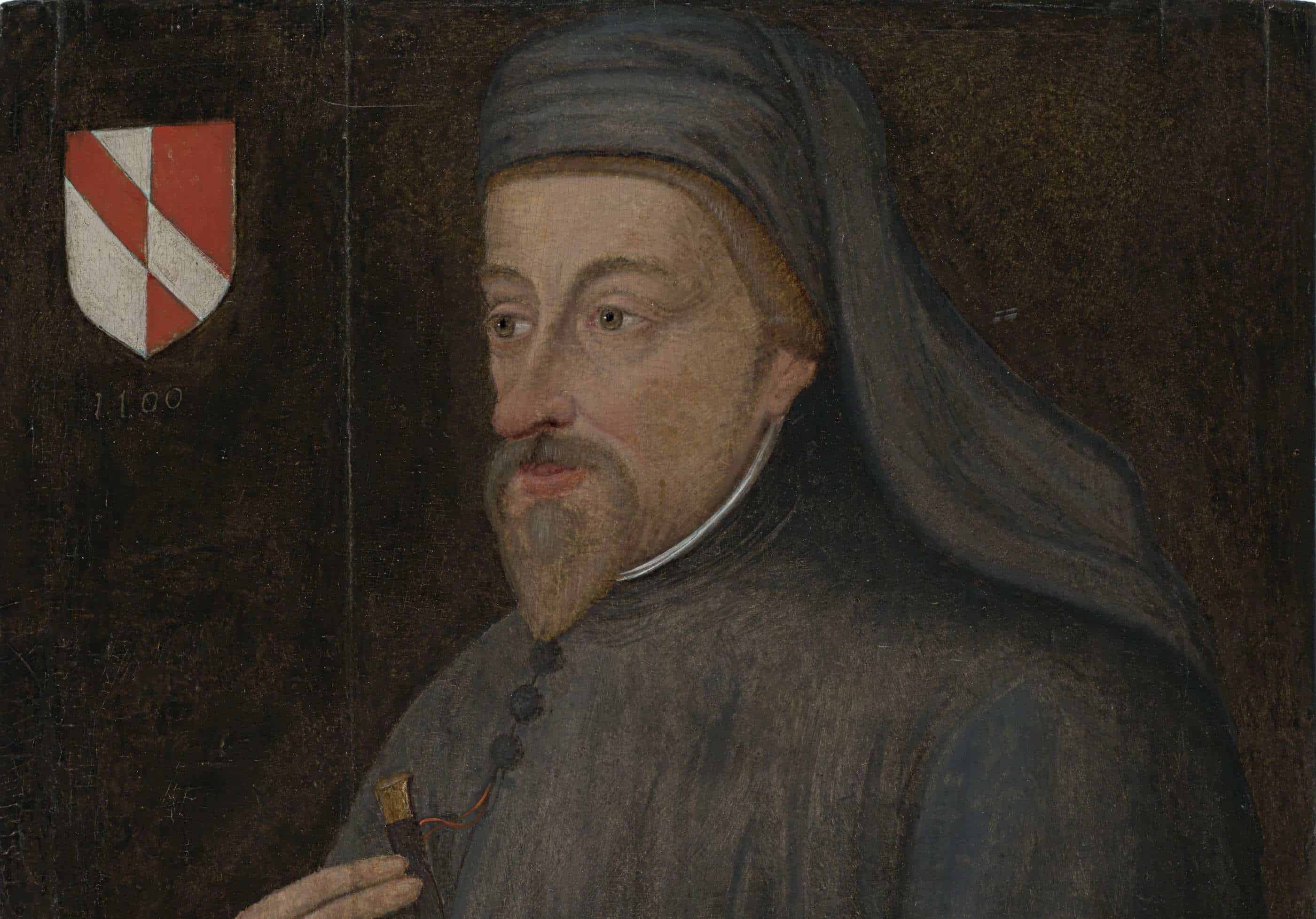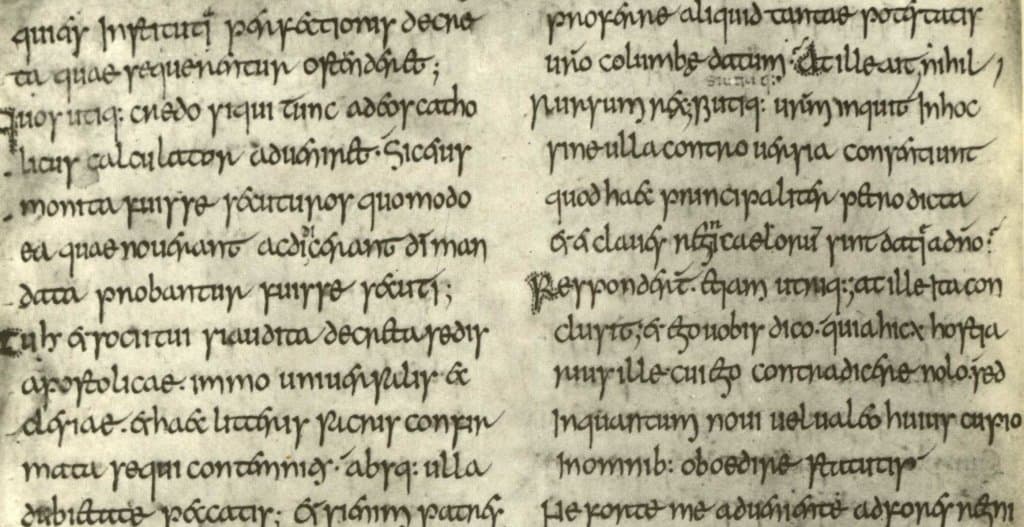The Historia Regum Britanniae, translated as ‘The History of the Kings of Britain’ is a medieval text written by Geoffrey of Monmouth around 1136, and is an account of British history laced with fictitious references and tales of drama.
The book charts the rise and fall of the kings of Britain, tracking the tales of conquest, power and success. Starting with the Trojan founding of the British Isles and following the trail of those in power until the time of the Anglo-Saxons, this body of work forms a vital component of the Matter of Britain.
The Matter of Britain refers to the collection of medieval literary works which depict legend and mythology, entwined with tales of heroism and patriotism, which exemplifies this genre of literature.
As a medieval source, the text has great value and although it may prove to be fictitious and highly misrepresentative of the facts, the book provides an interesting insight into the medieval world.
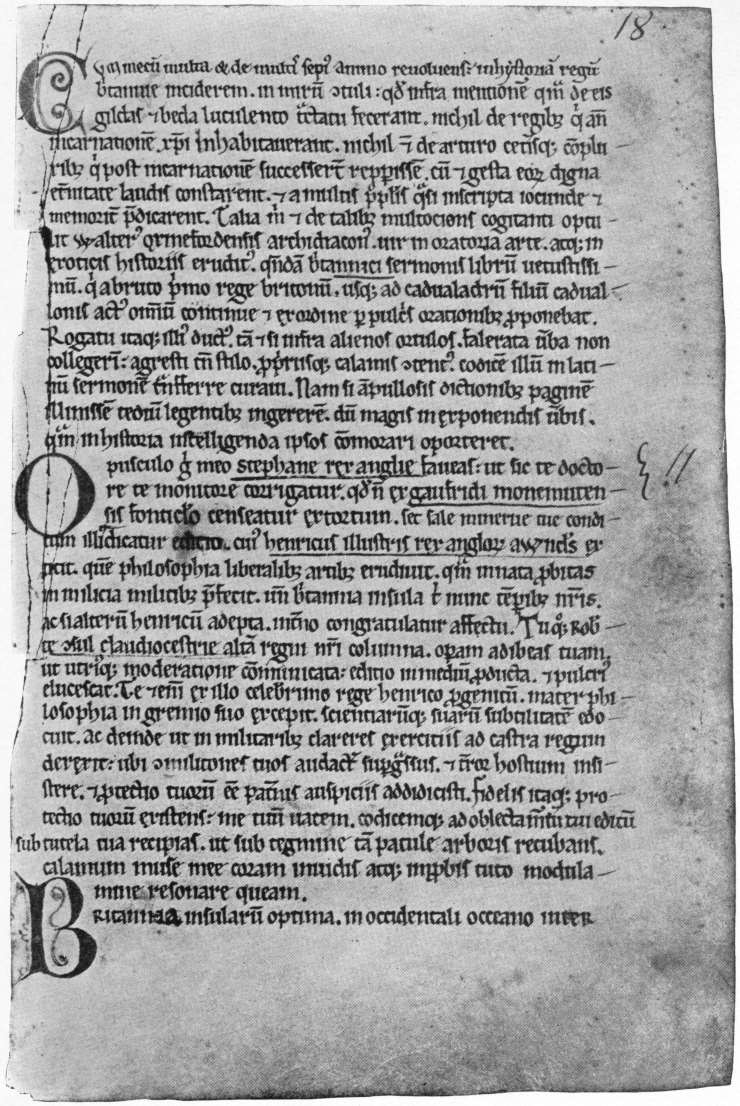
The book proved to be extremely popular with its medieval audience. This popularity far surpassed expectation and subsequently the Latin text was translated into several other languages, allowing the book to become an important source for many well into the sixteenth century.
Geoffrey of Monmouth, thought to have been born in Wales around 1100, was a monk as well as an influential scholar. He is thought to have spent most of his life outside Wales, as his name appears on several charters in the Oxfordshire area. In 1152, Geoffrey became Bishop of St Asaph, consecrated by Archbishop Theobald of Bec at Lambeth.
His most famous work was ‘Historia Regum Britanniae’ completed around 1140 and apparently based on the translations of ancient British texts. The book tracks the history of Britain, through intrepid tales ranging from the Roman invasion by Julius Caesar to the tales of King Lear and Cymbeline. The narrative includes some of the most compelling British myths and legends we are familiar with today.
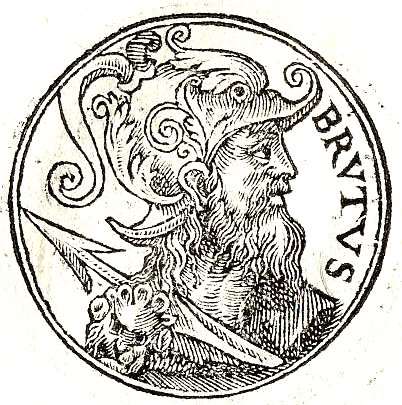
The book is arranged in twelve sections, with the first part covering ten centuries, beginning with the Trojan War and the mythic founder of Britain, Brutus, who was the great-grandson of Prince Aeneas. Meanwhile, the final six books of the manuscript narrate the events of King Arthur’s era.
In fact, the book served as the foundation for the Arthurian legend, with Merlin and Arthur mythology entrenched in British story-telling for centuries to come. The legend of King Arthur was a vital part or Geoffrey of Monmouth’s work and continues to remain popular today.
His depiction of King Arthur as a great king of Britain who defended his kingdom against the Saxons, would capture the imagination of the medieval world. Geoffrey’s story included the details of the legend of Arthur, including Merlin the magician, his wife Guinevere and the sword Excalibur. With additions to the story from French writer Chretien de Troyes, the Arthurian story took on a whole new dimension as not only a military tale but also one of romance. Tales of the Holy Grail, Knights of the Round Table and a host of other characters helped to entrench it as one of the favourite tales of the Middle Ages.
Whilst Geoffrey lived a religious life, he also devoted much of his time to scholarship, writing in Latin which was the lingua franca of the academic world in medieval Europe.
Geoffrey sourced material from a wide range of texts including the Venerable Bede’s ‘Ecclesiastical History of the English People’, as well as the ‘Historia Brittonum’, a ninth century text. From this variety of sources Geoffrey was able to extract stories and events which could be suitably re-told with elaborate embellishment and vivid story-telling.
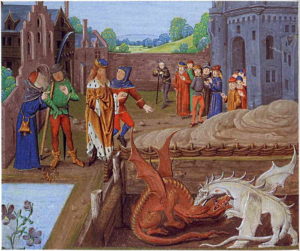 Illumination of a 15th century manuscript of Historia Regum Britanniae. It shows Vortigern, king of the Britons, and Ambros watching the fight between two dragons
Illumination of a 15th century manuscript of Historia Regum Britanniae. It shows Vortigern, king of the Britons, and Ambros watching the fight between two dragons
Geoffrey’s work very quickly became entrenched in popular culture so much so that several centuries later, in the time of Shakespeare, his book was available in Latin as well as Norman French. With ‘Historia’ containing what is believed to be the earliest manuscript of the tale of King Lear and his three daughters, it could have perhaps even been used as a useful source of inspiration for the budding talent of a great writer such as Shakespeare himself.
The aim of the book was to document a vast and impressive tale of how Britain came to be, with enthralling tales that captured the imagination of its medieval audience. Despite the fact that as early as the sixteenth century, scholars had begun to question its reliability, it still remains a valuable historical source and even today, the legendary stories of historical figures, mythical or otherwise, continue to engage readers far and wide.
Jessica Brain is a freelance writer specialising in history. Based in Kent and a lover of all things historical.
